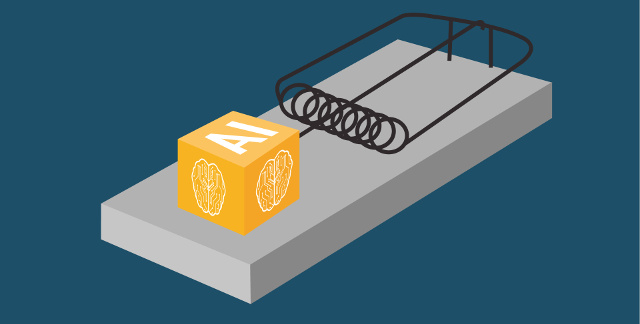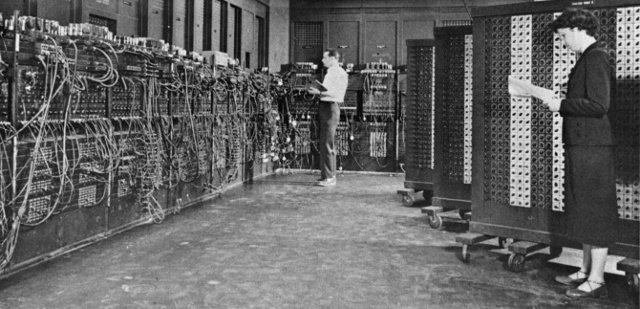Why Go? – Key advantages you may have overlooked
Why Go? – Key advantages you may have overlooked
Go makes it easier (than Java or Python) to write correct, clear and efficient code.

Choosing a programming language isn’t easy. The separate features of a language may look great at first, but it takes time and experience to spot the drawbacks.
As a CS professor and longtime Go and Java developer, I’d like to share some of my thoughts and explain why I prefer Go to Java or Python – Go makes it much easier for me to write good code.
Go has been my main programming tool since 2012, replacing Java, which in turn replaced C in 1998. I use Python mostly for teaching. My journey as a programmer started back in 1978 on a TI-57 with 50 program steps and 8 registers.
Minimalism

Go is a minimalist language, and that’s (mostly) a blessing.
The formal Go language specification is only 50 pages, has plenty of examples, and is fairly easy to read. A skilled programmer could probably learn Go from the specification alone.
The core language consists of a few simple, orthogonal features that can be combined in a relatively small number of ways. This makes it easier to learn the language, and to read and write programs.
When you add new features to a language, the complexity doesn’t just add up, it often multiplies: language features can interact in many ways. This is a significant problem – language complexity affects all developers (not just the ones writing the spec and implementing the compiler).
Here are some core Go features:
- The built-in frameworks for testing and profiling are small and easy to learn, but still fully functional. There are plenty of third-party add-ons, but chances are you won’t need them.
- It’s possible to debug and profile an optimized binary running in production through an HTTP server.
- Go has automatically generated documentation with testable examples. Once again, the interface is minimal, and there is very little to learn.
- Go is strongly and statically typed with no implicit conversions, but the syntactic overhead is still surprisingly small. This is achieved by simple type inference in assignments together with untyped numeric constants. This gives Go stronger type safety than Java (which has implicit conversions), but the code reads more like Python (which has untyped variables).
- Programs are constructed from packages that offer clear code separation and allow efficient management of dependencies. The package mechanism is perhaps the single most well-designed feature of the language, and certainly one of the most overlooked.
- Structurally typed interfaces provide runtime polymorphism through dynamic dispatch.
- Concurrency is an integral part of Go, supported by goroutines, channels and the select statement.
See Go vs. Java: 15 main differences for a small code example, and a sample of basic data types, methods and control structures.
Features for the future

Go omits several features found in other modern languages.
Here’s the language designers’ answer to Why does Go not have feature X?
Every language contains novel features and omits someone’s favorite feature. Go was designed with an eye on felicity of programming, speed of compilation, orthogonality of concepts, and the need to support features such as concurrency and garbage collection. Your favorite feature may be missing because it doesn’t fit, because it affects compilation speed or clarity of design, or because it would make the fundamental system model too difficult.
New features are considered only if there is a pressing need demonstrated by experience reports from real-world projects.
There are a few likely major additions in the pipeline:
- Package management through modules were preliminary introduced in Go 1.11.
- There is a generics draft design, which may be implemented in Go 2. For now, have a look at Generics (alternatives and workarounds).
- Similarly, there is an error handling draft design that extends the current minimalist error handling.
Currently, some minor additions are considered to help create and test a community-driven process for developing Go.
However, features such as optional parameters, default parameter values and method overloading probably won’t be part of a future Go 2.
Java comparison
The Java® Language Specification is currently 750 pages. Much of the complexity is due to feature creep. Here are but three examples.
Java inner classes suddenly appeared in 1997; it took more than a year to update the specification, and it became almost twice as big as a result. That’s a high price to pay for a non-essential feature.
Generics in Java, implemented by type erasure, make some code cleaner and allow for additional runtime checks, but quickly become complex when you move beyond basic examples: generic arrays aren’t supported and type wildcards with upper and lower bounds are quite complicated. The string “generic” appears 280 times in the specification. It’s not clear to me if this feature is worth its cost.
A Java enum, introduced in 2004, is a special type of class that represents a group of constants. It’s certainly nice to have, but offers little that couldn’t be done with ordinary classes. The string “enum” appears 241 times in the specification.
Code transparency

Your project is doomed if you can’t understand your code.
- You always need to know exactly what your coding is doing,
- and sometimes need to estimate the resources (time and memory) it uses.
Go tries to meet both of these goals.
The syntax is designed to be transparent and there is one standard code format, automatically generated by the fmt tool.
Another example is that Go programs with unused package imports do not compile. This improves code clarity and long-term performance.
I suspect that the Go designers made some things difficult on purpose. You need to jump through hoops to catch a panic (exception) and you are forced to sprinkle your code with the word “unsafe” to step around type safety.
Python comparison
The Python code snippet del a[i] deletes the element at index i from a list a. This code certainly is quite readable, but not so transparent: it’s easy to miss that the time complexity is O(n), where n is the number of elements in the list.
Go doesn’t have a similar utility function. This is definitely less convenient, but also more transparent. Your code needs to explicitly state if it copies a section of the list. See 2 ways to delete an element from a slice for a Go code example.
Java comparison
Code transparency is not just a syntactic issue. Here are two examples where the rules for Go package initialization and program execution order make it easier to reason about and maintain a project.
Circular dependencies can cause many unwanted effects. As opposed to Java, a Go program with initialization cycles will not compile.
When the main function of a Go program returns, the program exits. A Java programs exits when all user non-daemon threads finish.
This means that you may need to study large parts of a Java program to understand some of its behavior. This may even be impossible if you use third-party libraries.
Compatibility

A language that changes abruptly, or becomes unavailable, can end your project.
Go 1 has succinct and strict compatibility guarantees for the core language and standard packages – Go programs that work today should continue to work with future releases of Go 1. Backward compatibility has been excellent so far.
Go is an open source project and comes with a BSD-style license that permits commercial use, modification, distribution, and private use. Copyright belongs to The Go Authors, those of us who contributed to the project. There is also a patent grant by Google.
Python comparison
If you’re a Python developer, you know the pain of having to deal with the differences between Python 2.7.x and Python 3.x. There are strong reasons for choosing Python 3, but if you depend on libraries that are only available for an older version, you may not be able.
Java comparison

Java has a very good history of backward compatibility and the Compatibility Guide for JDK 8 is extensive. Also, Java has been freely available to developers for a long time.
Unfortunately, there are some dark clouds on the horizon with the Oracle America, Inc. v. Google, Inc. legal case about the nature of computer code and copyright law, and Oracle’s new Java licensing model.
Performance

The exterior of Go is far from flashy, but there is a fine-tuned engine underneath.
It makes little sense to discuss performance issues out of context. Running time and memory use is heavily influenced by factors such as algorithms, data structures, input, coding skill, operating systems, and hardware.
Still, language, runtime and standard libraries can have a large effect on performance. This discussion is limited to high-level issues and design decisions. See the Go FAQ for a more detailed look at the implementation and its performance.
First, Go is a compiled language. An executable Go program typically consists of a single standalone binary, with no separate dynamic libraries or virtual machines, which can be directly deployed.
Size and speed of generated code will vary depending on target architecture. Go code generation is fairly mature and the major OSes (Linux, macOS, Windows) and architectures (Intel x86/x86-64, ARM64, WebAssembly, ARM), as well as many others, are supported. You can expect performance to be on a similar level to that of C++ or Java. Compared to interpreted Python code, the improvement can be huge.
Go is garbage collected, protecting against memory leaks. The collection has very low latency. In fact, you may never notice that the GC thread is there.
The standard libraries are typically of high quality, with optimized code using efficient algorithms. As an example, regular expressions are very efficient in Go with running time linear in the size of the input. Unfortunately, this is not true for Java and Python.
Build speeds, in absolute terms, are currently fairly good. More importantly, Go is designed to make compilation and dependency analysis easy, making it possible to create programming tools that scales well with growing projects.
Why Go? – Key advantages you may have overlooked的更多相关文章
- What are the advantages of different classification algorithms?
What are the advantages of different classification algorithms? For instance, if we have large train ...
- WCF学习系列一【WCF Interview Questions-Part 1 翻译系列】
http://www.topwcftutorials.net/2012/08/wcf-faqs-part1.html WCF Interview Questions – Part 1 This WCF ...
- (转) Graph-powered Machine Learning at Google
Graph-powered Machine Learning at Google Thursday, October 06, 2016 Posted by Sujith Ravi, S ...
- 高效的两段式循环缓冲区──BipBuffer
Simon Cooke,美国 (原作者) 北京理工大学 20981 陈罡(翻译) 写在前面的话: 循环缓冲区是一个非常常用的数据存储结构,已经被广泛地用于连续.流数据的存储和通信应用中.对于循环缓冲区 ...
- The Bip Buffer - The Circular Buffer with a Twist
Introduction The Bip-Buffer is like a circular buffer, but slightly different. Instead of keeping on ...
- Mysql基本架构及查询流程
mysql体系结构简单概述: Connectors:接入方,支持协议很多 Management Serveices & Utilities:系统管理和控制工具例如:备份恢复,mysql复制集群 ...
- [转]OpenVPN官网的HOWTO
因为墙的原因,打不开.特此转一下: HOWTO Introduction OpenVPN is a full-featured SSL VPN which implements OSI layer 2 ...
- [AWS] Deploy react project on EC2
如何在aws部署项目 申请到亚马逊AWS免费账户后,我们可以拥有很多的免费云服务产品项目,其中包括: EC2云服务器. Amazon S3存储. Amazon RDS数据库. Amazon Cloud ...
- a no-risk path to IEEE P1687
You’ve heard all about IJTAG (IEEE P1687) [1,2,3], a new standard for accessing embedded test and d ...
随机推荐
- IBM.WMQ订阅主题,连续获取消息解决办法
去队列里面一直获取消息,一开始想到了两种解决方案: 第一:订阅一次获取一次消息,正常的话每次都能获取到,但是要及时去清理订阅并且时间粒度不好控制 第二:订阅一次,再获取消息这里加死循环,超时MQ已经做 ...
- cocos creator 判断滑动方向
定义变量 public firstX = null; public firsty = null; 点击 获取坐标 this.viewNode.on(cc.Node.EventType.TOUCH_ST ...
- redis的主从复制和哨兵模式
Redis主从复制是什么? 行话:也就是我们所说的主从复制,主机数据更新后根据配置和策略, 自动同步到备机的master/slaver机制,Master以写为主,Slave以读为主 Redis主从复制 ...
- 如何使用js实现轮播图
<!DOCTYPE html><html lang="en"> <head> <meta charset="UTF-8" ...
- WCF-复杂配置
两种模式,一个契约两个实现,两个契约一个实现. 服务类库 宿主 static void Main(string[] args) { ServiceHost sh1 = new ServiceHost( ...
- java日志框架系列(8):logback框架PatternLayout详解
当你想要将记录以你想要的的格式写到目的地时,那么你就需要了解如何设置自定义的格式了. 1.PatternLayout 转换模式:由文本文字和格式转换符组成. 下面了解一下格式转换符与格式修饰符表示的意 ...
- php之简单算法
选择排序 方式:先让第一位与其他位比较大小找到最小的数字,然后是第二位与除第一位的其他位比较大小找出第二位,依此类推 $arr = [2,45,12,67,33,5,23,132,46]; for ( ...
- linux下安装lnmp集成环境
linux下安装lnmp集成环境 教程地址:https://www.cnblogs.com/peteremperor/p/6750204.html 必须要用root用户,否则权限不够无法安装 安装最新 ...
- 使用Python比较MySQL数据库中两个数据库的表结构--转载
https://blog.csdn.net/tenaguan4461/article/details/82286781 https://www.jianshu.com/p/b3dac5a3479a
- apache - storm - Setting Up a Development Environment
Installing a Storm release locally If you want to be able to submit topologies to a remote cluster f ...
